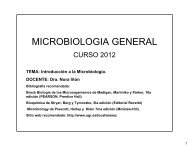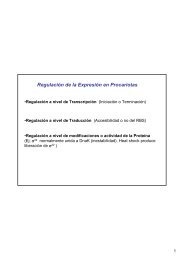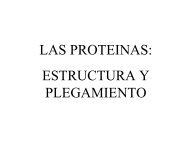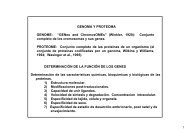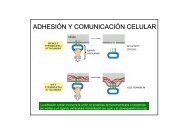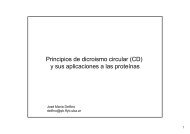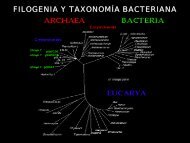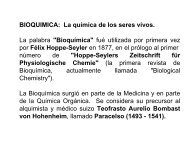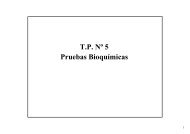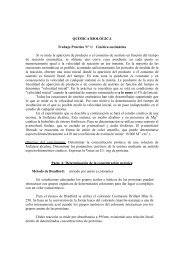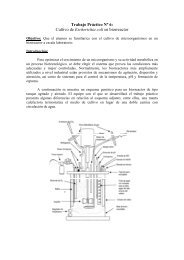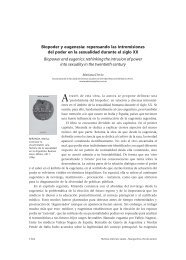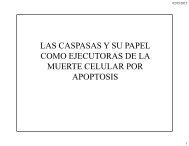Una señal es una molécula o una propiedad física (ej. fuerza) que ...
Una señal es una molécula o una propiedad física (ej. fuerza) que ...
Una señal es una molécula o una propiedad física (ej. fuerza) que ...
You also want an ePaper? Increase the reach of your titles
YUMPU automatically turns print PDFs into web optimized ePapers that Google loves.
Diferent<strong>es</strong> proteínas G acoplan el receptor a efector<strong>es</strong> <strong>es</strong>pecíficos <strong>que</strong> pueden serenzimas o proteínas <strong>que</strong> forman un canal iónicoG α Subclass*EffectAssociated EffectorProtein2nd M<strong>es</strong>sengerG s(activación)Adenylyl cyclaseCa 2+ channelcAMPCa 2+G i(inhibición)Na + channelChange inmembrane potentialAdenylyl cyclasecAMPK + channelChange inmembrane potentialCa 2+ channelCa 2+G q Phospholipase CβIP 3 , DAGG oPhospholipase CβIP 3 , DAGCa 2+ channelCa 2+G t cGMPphosphodi<strong>es</strong>terasecGMPG bγPhospholipase CβIP 3 , DAGAdenylyl cyclasecAMP* A given G α may be associated with more than one effector protein. To date, only onemajor G sα has been identified, but multiple G qα and G iα proteins have been d<strong>es</strong>cribed. Insome cas<strong>es</strong> (not indicated in this table) effector proteins are regulated by coincidentbinding to G a and G bγ .KEY: = stimulation; ? = inhibition. IP 3 = inositol 1,4,5-trisphosphate; DAG = 1,2-diacylglycerol.



